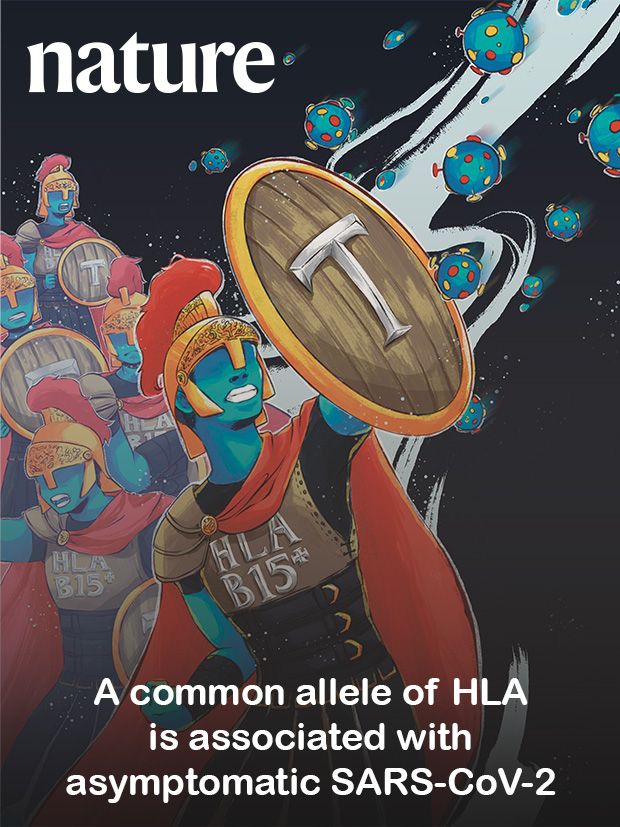We are happy to share our publications
2024
Type I interferons induce an epigenetically distinct memory B cell subset in chronic viral infection. Immunity.
Characterisation of novel influenza-derived HLA-B*18:01-restricted epitopes. Clin Transl Immunology.
A blood-based mRNA signature distinguishes people with Long COVID from recovered individuals. Frontiers in Immunology.
CD8+ T cell epitope conservation in emerging H5N1 viruses suggests global protection. Clin Transl Immunology.
High glycemic variability is associated with a reduced T cell cytokine response to influenza A virus. iScience.
Beyond acute infection: mechanisms underlying post-acute sequelae of COVID-19 (PASC). The Medical Journal of Australia.
Fighting flu: novel CD8+ T-cell targets are required for future influenza vaccines. Clin Transl Immunology.
Public T cell clonotypes are selected in HLA-B∗57:01+/HIV+ patients independently of the viral load. Cell Reports.
Detection of Lymphocytic Choriomeningitis Virus-Specific Memory B Cells Using Antigen Tetramers. Methods Mol Biol.
The impact of SARS-CoV-2 spike mutation on peptide presentation is HLA allomorph-specific. Current Research in Structural Biology.
Increasing HbA1c is associated with reduced CD8+ T cell functionality in response to influenza virus in a TCR-dependent manner in individuals with diabetes mellitus. Cell Mol Life Sci.
2023
Elevated BMI reduces the humoral response to SARS-CoV-2 infection. Clin Transl Immunology.
Molecular insights into the HLA-B35 molecules’ classification associated with HIV control. Immunol Cell Biol.
Newborn and child-like molecular signatures in older adults stem from TCR shifts across human lifespan. Nature Immunology.
CD1 lipidomes reveal lipid-binding motifs and size-based antigen-display mechanisms. Cell.
Robust and prototypical immune responses toward COVID-19 vaccine in First Nations peoples are impacted by comorbidities. Nature Immunology.
mRNA vaccine against malaria tailored for liver-resident memory T cells. Nature Immunology.
A common allele of HLA is associated with asymptomatic SARS-CoV-2 infection. Nature.

2022
SARS-CoV-2-specific CD4+ and CD8+ T cell responses can originate from cross-reactive CMV-specific T cells. Elife. doi: 10.7554/eLife.82050.
Ablation of CD8+ T cell recognition of an immunodominant epitope in SARS-CoV-2 Omicron variants BA.1, BA.2 and BA.3. Nature Communications. doi: 10.1038/s41467-022-34180-1.
Homologous peptides derived from influenza A, B and C viruses induce variable CD8+ T cell responses with cross-reactive potential. Clin Transl Immunology (CTI). doi: 10.1002/cti2.1422.
Protective HLA-B57: T cell and natural killer cell recognition in HIV infection. Biochem Soc Trans. doi: 10.1042/BST20220244.
Covalent TCR-peptide-MHC interactions induce T cell activation and redirect T cell fate in the thymus. Nature Communications. doi: 10.1038/s41467-022-32692-4.
Ablation of CD8+ T-cell recognition of an immunodominant epitope in SARS-CoV-2 Omicron. Research Square (preprint). doi.org/10.21203/rs.3.rs-1289622/v1.
Protocol for generation of human peptide-specific primary CD8+ T cell lines. STAR Protoc. doi: 10.1016/j.xpro.2022.101590.
Cutting Edge: Unconventional CD8+ T Cell Recognition of a Naturally Occurring HLA-A*02:01-Restricted 20mer Epitope. Journal of Immunology. doi: 10.4049/jimmunol.2101208.
HLA-A*11:01-restricted CD8+ T cell immunity against influenza A and influenza B viruses in Indigenous and non-Indigenous people. PLoS Pathog. doi: 10.1371/journal.ppat.1010337.
Limited Recognition of Highly Conserved Regions of SARS-CoV-2. Microbiol Spectr. doi: 10.1128/spectrum.02780-21.
2021
COVID-19 vaccine booster induces a strong CD8+ T cell response against Omicron variant epitopes in HLA-A*02:01+ individuals. bioRxiv (pre-print).
Low antigen abundance limits efficient T-cell recognition of highly conserved regions of SARS-CoV-2. bioRxiv. /doi.org/10.1101/2021.10.13.464181.
The pockets guide to HLA class I molecules. Biochem Soc Trans. doi: 10.1042/BST20210410.
Molecular Basis of a Dominant SARS-CoV-2 Spike-Derived Epitope Presented by HLA-A*02:01 Recognised by a Public TCR. Cells. doi: 10.3390/cells10102646.
Protein purification and crystallization of HLA-A∗02:01 in complex with SARS-CoV-2 peptides. STAR Protoc. doi: 10.1016/j.xpro.2021.100635.
The role of T-cell immunity in COVID-19 severity amongst people living with type II diabetes. FEBS J. doi: 10.1111/febs.16105.
Canonical T cell receptor docking on peptide-MHC is essential for T cell signaling. Science. doi: 10.1126/science.abe9124. PMID: 34083463
CD8+ T cell landscape in Indigenous and non-Indigenous people restricted by influenza mortality-associated HLA-A*24:02 allomorph. Nat Commun. doi: 10.1038/s41467-021-23212-x.
Immune cellular networks underlying recovery from influenza virus infection in acute hospitalized patients. Nat Commun. doi: 10.1038/s41467-021-23018-x.
CD8+ T cells specific for an immunodominant SARS-CoV-2 nucleocapsid epitope cross-react with selective seasonal coronaviruses. Immunity. doi: 10.1016/j.immuni.2021.04.006.
The presentation of SARS-CoV-2 peptides by the common HLA-A∗02:01 molecule. iScience. doi: 10.1016/j.isci.2021.102096.
2020
The Many Faces of CD4+ T Cells: Immunological and Structural Characteristics. Int J Mol Sci. doi: 10.3390/ijms22010073.
TCR Recognition of Peptide-MHC-I: Rule Makers and Breakers. Int J Mol Sci. doi: 10.3390/ijms22010068.
Overlapping Peptides Elicit Distinct CD8+ T Cell Responses following Influenza A Virus Infection. J Immunol. doi: 10.4049/jimmunol.2000689.
Impact of HLA-DR Antigen Binding Cleft Rigidity on T Cell Recognition. Int J Mol Sci. doi: 10.3390/ijms21197081.
A Shared TCR Bias toward an Immunogenic EBV Epitope Dominates in HLA-B*07:02-Expressing Individuals. J Immunol. doi: 10.4049/jimmunol.2000249.
HLA-B*27:05 alters immunodominance hierarchy of universal influenza-specific CD8+ T cells. PLoS Pathog. doi: 10.1371/journal.ppat.1008714
https://pubmed.ncbi.nlm.nih.gov/32396839/A Natural Peptide Antigen within the Plasmodium Ribosomal Protein RPL6 Confers Liver TRM Cell-Mediated Immunity against Malaria in Mice. Cell Host Microbe doi: 10.1016/j.chom.2020.04.010
The unconventional role of HLA-E: The road less traveled. Molecular Immunology doi: 10.1016/j.molimm.2020.02.011
